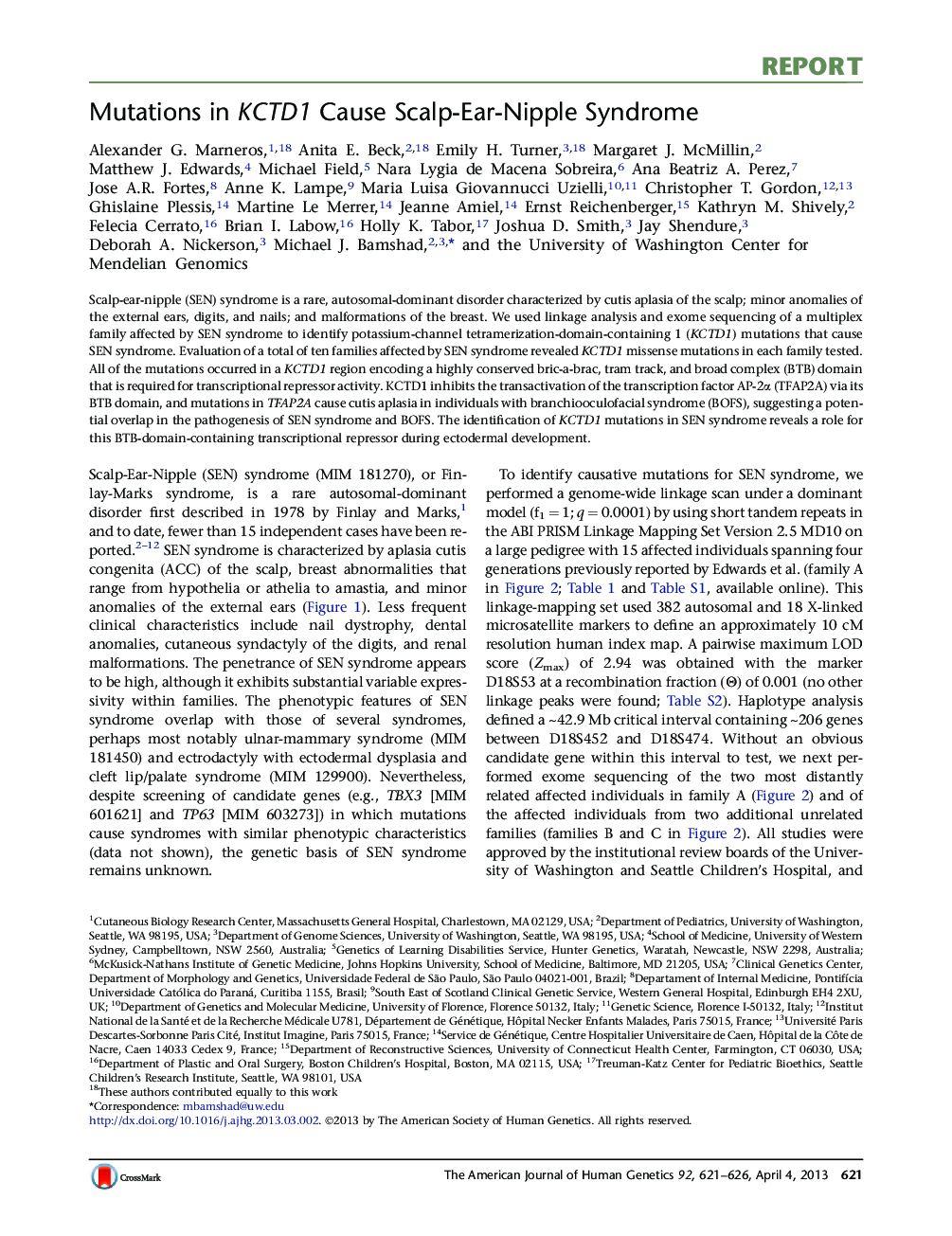| Article ID | Journal | Published Year | Pages | File Type |
|---|---|---|---|---|
| 2811433 | The American Journal of Human Genetics | 2013 | 6 Pages |
Scalp-ear-nipple (SEN) syndrome is a rare, autosomal-dominant disorder characterized by cutis aplasia of the scalp; minor anomalies of the external ears, digits, and nails; and malformations of the breast. We used linkage analysis and exome sequencing of a multiplex family affected by SEN syndrome to identify potassium-channel tetramerization-domain-containing 1 (KCTD1) mutations that cause SEN syndrome. Evaluation of a total of ten families affected by SEN syndrome revealed KCTD1 missense mutations in each family tested. All of the mutations occurred in a KCTD1 region encoding a highly conserved bric-a-brac, tram track, and broad complex (BTB) domain that is required for transcriptional repressor activity. KCTD1 inhibits the transactivation of the transcription factor AP-2α (TFAP2A) via its BTB domain, and mutations in TFAP2A cause cutis aplasia in individuals with branchiooculofacial syndrome (BOFS), suggesting a potential overlap in the pathogenesis of SEN syndrome and BOFS. The identification of KCTD1 mutations in SEN syndrome reveals a role for this BTB-domain-containing transcriptional repressor during ectodermal development.
